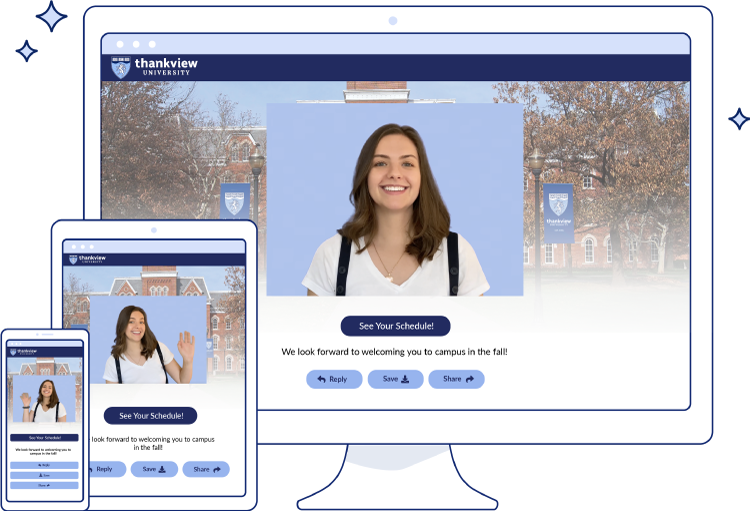Top Tips for Nonprofit Year-End Giving Campaigns
‘Tis the season for end-of-year fundraising. For nonprofit organizations, the time leading up to the holiday season is their last chance to attract new donors and engage with existing supporters. From around Thanksgiving through year-end, your development and communications teams will likely be working on overdrive to secure the donations you need to hit your annual fundraising goals.
Why Year-End Giving
That final fundraising push at the end of the year comes for two primary reasons.
First, taxes. By the end of December, people will have a better grasp on that year’s finances. They’ll know how much revenue they made. They’ll be able to see how much money they’ve spent or saved. And most importantly, they’ll be able to calculate the amount of cash they’ll owe in taxes. Many people — especially high net worth donors in higher tax brackets — would rather donate to a nonprofit’s mission than pay more taxes. Donations to 501(c)(3) organizations are tax deductible, so the contribution lowers donors’ tax burden.
Second, generosity. Many people feel compelled to give out of the goodness of their hearts. Many families have traditions of volunteering at soup kitchens on Thanksgiving, raking leaves or performing music for the elderly, and donating a portion of their income to charity before New Year’s Day. Regardless of religion or which holidays people celebrate, people feel good donating to the communities and causes they care about.
Campaign Best Practices
Most of the time, the year-end appeal goes toward the generic annual fund. That approach can work for recurring donors who are already loyal fans. They may have even dog-eared money for your nonprofit since last year. But to rope in new donors or steward your supporters into higher giving levels, you might want to consider a special fundraiser. The more targeted your fundraising efforts, the more likely you are to have a successful year-end campaign.
Be Specific
Weave concrete asks into your donation forms. Guide donors with suggested gift sizes that are tied to specific benchmarks. If you build homes, tell the donor how much a door or roof costs. If you provide free therapy, be sure to include how much it costs to run a session. An infographic can be really helpful to show the real-world effects of different giving tiers.
Encourage board members to get involved with donor stewardship by reaching out to specific people in their networks. If they’re trained and comfortable, your board members can make the ask. If not, they can warm up the prospect by giving their personal experience with your organization before passing the potential donor to your development team or executive director to close the deal.

Plan for Giving Tuesday, which always takes place the Tuesday after Thanksgiving, Black Friday, and Cyber Monday. The organization behind the “global generosity movement” provides free resources to nonprofits, including tips, promotional materials, and templated scripts. The day is well-known and it’s easy to jump on the bandwagon to snag some year-end donors.
Leverage matching gifts by keeping donors informed. Getting large businesses involved is a great way to increase donor engagement by having someone else advocate for your cause. Gift amounts vary by employer, but employees normally have until the last day of the year to claim their match.
Be Memorable
Up to 50% of annual giving comes in the last quarter of the year. That means you need to stand out from all the peer organizations that are also doing heavy outreach during this time of year. Good storytelling and strong branding are ways to make a lasting impression.
Stories create emotional responses and are more memorable than facts. Play on the holiday themes of thankfulness, community, and giving through your messaging. Use examples of program successes or policy wins to communicate your value. You want your stories to draw your audience closer to your mission. Year-end donors might even like to get to know your staff and volunteers, so don’t underestimate the impact of their stories in your fundraising appeals.
Use captions, images, videos, and even webinars to make your supporters feel like they’re part of something bigger than themselves. You might even consider peer-to-peer fundraising as a way to reach potential donors outside your existing pool. In this way, supporters will recruit new donors by becoming advocates of your cause. This strategy might help with donor retention as well since your existing donors will feel integral to the success of your organization.
If your team is developed enough, try audience segmentation based on a core cause. Imagine that your nonprofit provides domestic violence shelter, job training, and adult literacy classes. Through one-on-one conversations and surveys earlier in the year, hopefully, you can track which causes your donors are most passionate about. Then when it’s time to launch your year-end appeal, you can divide up which donors receive which story topic depending on their interests.
Be Consistent

There’s a lot of noise near the end of the year, between holiday posts and all the other nonprofits competing for attention. For that reason, you need to be consistent in your communication and outreach.
Show up on social media — often. That one post after the initial 30 might put someone over the edge and convince them to give a last-minute donation. Or it could be that they never saw your first 30 posts because there was so much other content in their newsfeeds. Stay on message, use strong visuals, and encourage engagement.
Make yourself seen in people’s email inboxes. If your subject line entices the reader to open your email, be sure the body text directs them to a specific donation page. With online fundraising, you want to eliminate as many barriers as possible and make it easy to donate.
Consider if it’s cost-effective to hit donors’ mailboxes with a direct mail fundraising campaign. In this medium, it’s all about the follow-up. They might read your letter and want to give, but then forget. That’s when you can try to re-capture their attention via social media posts, email, or even direct messaging or text messages.
Lastly, if your donors know you’re working toward a concrete fundraising goal that will deliver a tangible result, it’s a lot more compelling and memorable. You can even share regular updates, showing that you’re on track or in need of extra support.
Encourage Maximum Giving
Your fundraising strategy should carry you through all year long, but account for extra volume in the last quarter of the year. That’s when the giving season starts in full force. For a successful year-end campaign, you don’t want to begin your fundraising efforts so early that you lose the sense of urgency. But you also don’t want to be so late that everyone has already allocated their charitable dollars. Bank on at least a month of intense outreach from around Thanksgiving through New Year’s.
The success of your year-end fundraising campaign is not only how you will gauge this year’s fundraising efforts, it also provides baseline metrics to measure next year’s. Be sure to track year-over-year giving by checking for donor retention and donation amount. Maybe even examine how they gave — check versus online, peer-to-peer versus matching, etc.
Don’t forget about good stewardship either. ThankView’s personalized video platform makes it easy to engage with your donors after they generously give. Take the opportunity to customize your message. Especially if your donor supports multiple organizations, your video thank you will outshine any generic auto-responses they received this season. Sign up for a ThankView demo to see how to turn your donors into lifetime supporters.
